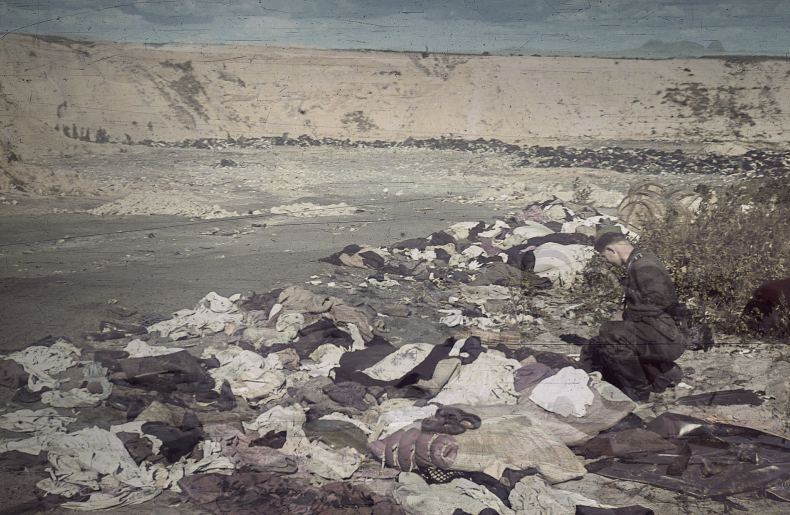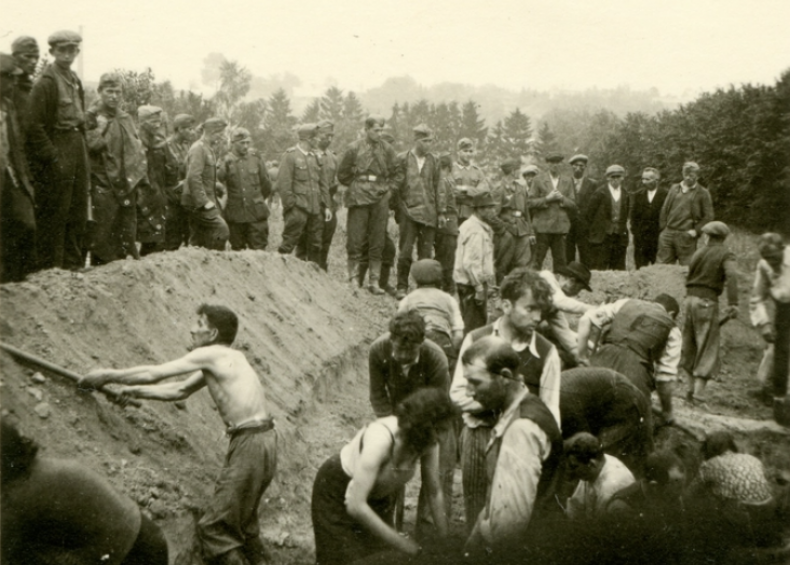It's Time to Talk About the Other Holocaust—the Holocaust by Bullets | Opinion
My childhood in post-World War II Ukraine seemed innocent enough. Little did I know that the countryside I played in included the killing fields where Nazis had slaughtered millions of Jews in mass shootings just a decade earlier. So many of us were ignorant of the blood stains hidden beneath our feet; the Soviets sought to obliterate the memory of what took place, as the particular suffering of Jews was anathema to their ideological narrative.
And they were all too successful. During the second half of the twentieth century, the world quite rightly became acquainted with the horrors of gas chambers and concentration camps. The names Auschwitz, Bergen-Belsen and Dachau have become synonymous with humanity's greatest evil. And yet, the "Holocaust by bullets" in Eastern Europe has largely evaded the historical record. Generations have grown up in virtual ignorance of the 2.5 million Jews mercilessly shot dead next to their homes across the region.
There is no more powerful example of this than Babyn Yar. In just two days at the end of September 1941, Nazi forces shot dead 33,700 Jews, mainly women and children, decimating the historic Kyiv Jewish community. Babyn Yar continued to be a mass murder site for the duration of the Nazi occupation, with tens of thousands of Ukrainians, Roma and mentally ill also executed there.

This haunting site, in the midst of Ukraine's capital, is Europe's largest mass grave. It is a history no less tragic than that of Auschwitz and other death camps etched into human consciousness.
And yet, few are those who know about it. The Soviet authorities buried the Babyn Yar tragedy—literally and figuratively. They turned Babyn Yar's blood-soaked earth into a waste ground, built housing and a motorway over it. They even planned to construct a sports stadium on the hallowed site, prompting the poet Yevgeny Yevtushenko to write with utter despair in 1961 that "no monument stands over Babyn Yar."
Since it gained independence in 1991, Ukraine has sought to redress this error, coming to terms with the crimes which took place on its soil, at Babyn Yar and beyond. It's an effort that remains an urgent cause eighty years on, as those who witnessed the massacre and those who saw their Jewish neighbors marched from their homes to their deaths are fast disappearing. If we do not reclaim the history of Babyn Yar and the wider "Holocaust by bullets" now, we may never do so.

That is why the upcoming eightieth anniversary of this seminal moment is so important. Now is the time for the world to be told about the horror of Babyn Yar. The names of the victims and the details of the lives they lived must not be forgotten. They must be recorded for evermore. The vibrant communities which perished in the "Holocaust by bullets" must not be obscure footnotes. They must be remembered and cherished.
For decades, the world has solemnly pledged "Never Again." For this promise is to have real meaning, then there must be an unwavering commitment to inform and educate. The world must know that Babyn Yar happened. The world must understand that millions across Eastern Europe were not herded into cattle trucks to their deaths thousands of miles away but were marched from their homes, past neighbors, colleagues and school friends, and cut down within earshot.
This is not just Jewish history or Ukrainian history. It's human history, a lesson for the world. If Jews or any other minority can be massacred next to their homes in Ukraine and across Eastern Europe, it can happen anywhere.
Only by remembering what happened eighty years ago, by enshrining the name of Babyn Yar in our history books, can we be sure that totalitarianism is never allowed to win. Unless we reclaim history now, we leave the door open for it to be repeated tomorrow.
Natan Sharansky is a human rights activist and Chair of the Babyn Yar Holocaust Memorial Center.
The views in this article are the writer's own.


